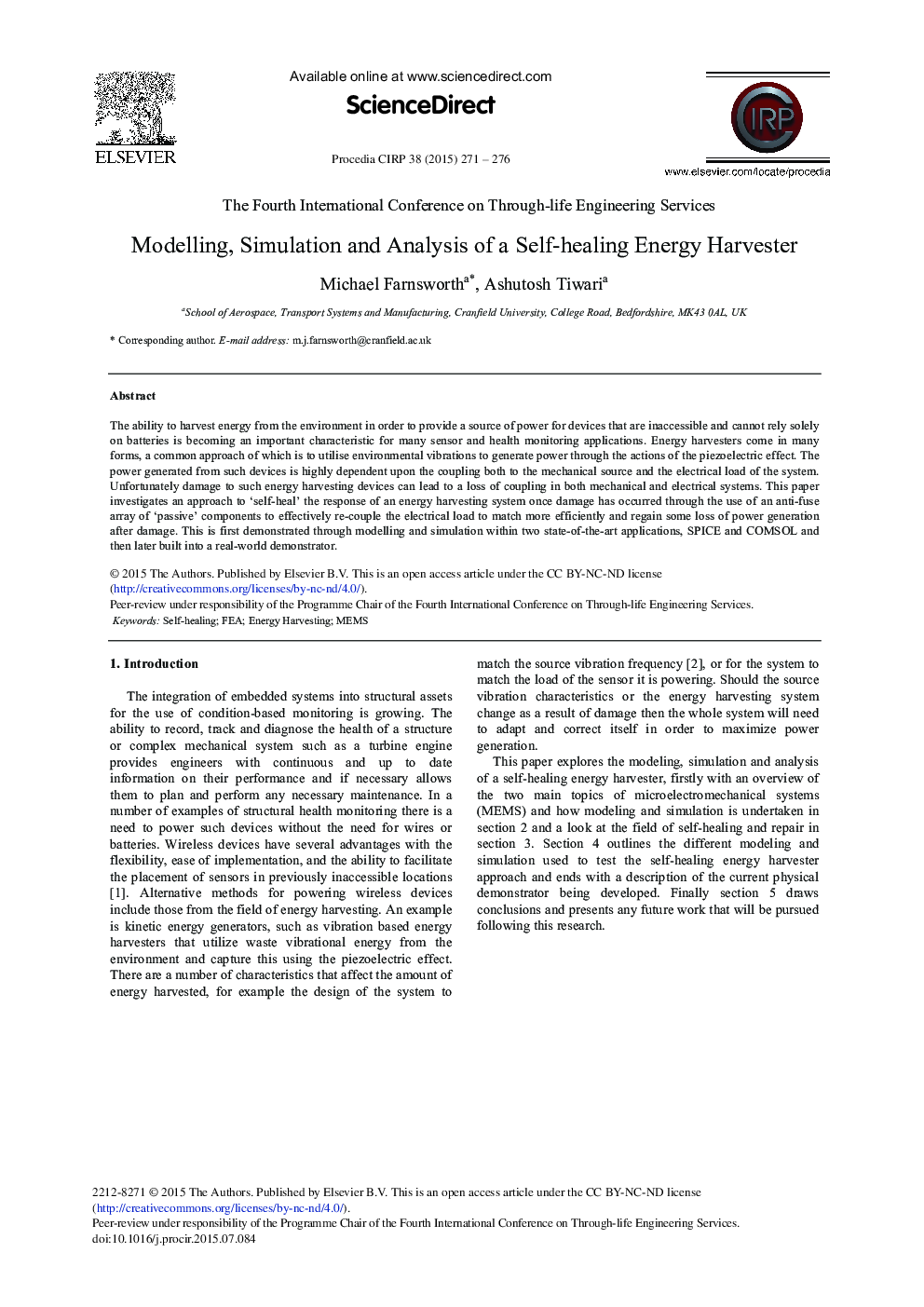| Article ID | Journal | Published Year | Pages | File Type |
|---|---|---|---|---|
| 1699202 | Procedia CIRP | 2015 | 6 Pages |
The ability to harvest energy from the environment in order to provide a source of power for devices that are inaccessible and cannot rely solely on batteries is becoming an important characteristic for many sensor and health monitoring applications. Energy harvesters come in many forms, a common approach of which is to utilise environmental vibrations to generate power through the actions of the piezoelectric effect. The power generated from such devices is highly dependent upon the coupling both to the mechanical source and the electrical load of the system. Unfortunately damage to such energy harvesting devices can lead to a loss of coupling in both mechanical and electrical systems. This paper investigates an approach to ‘self-heal’ the response of an energy harvesting system once damage has occurred through the use of an anti-fuse array of ‘passive’ components to effectively re-couple the electrical load to match more efficiently and regain some loss of power generation after damage. This is first demonstrated through modelling and simulation within two state-of-the-art applications, SPICE and COMSOL and then later built into a real-world demonstrator.
